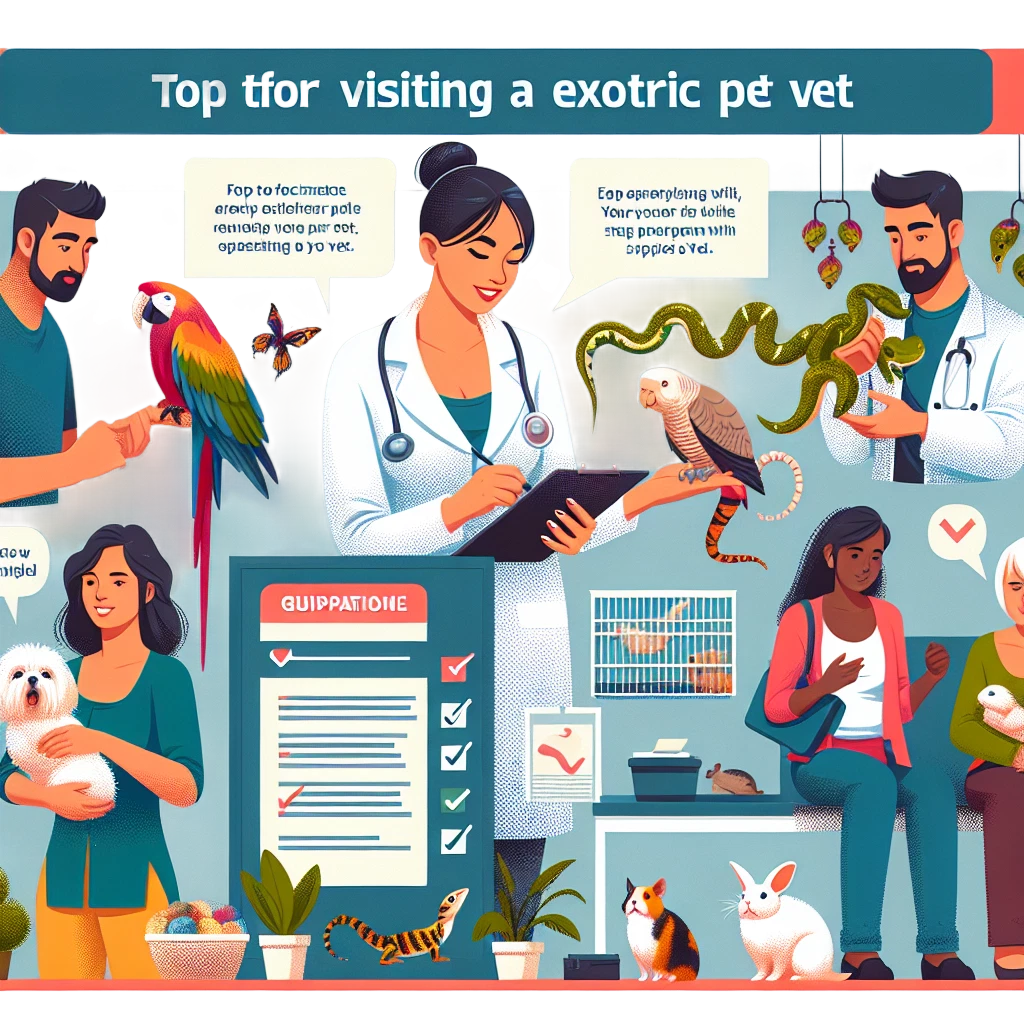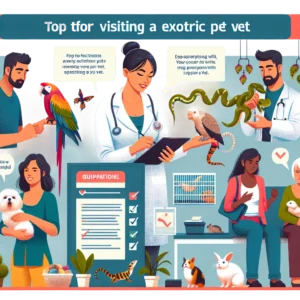How To Make a WordPress Website 2024
To make a WordPress website in 2024, simply follow these steps. First, choose a domain name and hosting provider.
Next, install WordPress and select a theme. Create pages, customize the layout, add plugins, and optimize for SEO. Finally, publish your website and promote it to attract visitors and achieve your goals. Making a website has never been easier, thanks to WordPress.
Whether you’re starting a blog, launching an online store, or building a business website, WordPress provides all the tools you need to create a professional-looking site without any coding knowledge. In this guide, we’ll walk you through the steps to make a WordPress website in 2024. By the end, you’ll have a fully functional website up and running. So let’s get started!

Credit: www.youtube.com
- Setting The Goals For Your Website
- Selecting The Right Hosting And Domain
- Customizing The Design Of Your Website
- Installing WordPress
- Configuring The Essential Plugins
- Creating Pages And Posts
- Enhancing Website Functionality With Plugins
- Implementing Seo Best Practices
- Ensuring Responsiveness And Mobile-Friendliness
- Testing And Troubleshooting
- Launching Your WordPress Website
- Frequently Asked Questions Of How To Make A WordPress Website 2024
- Conclusion
Setting The Goals For Your Website
Setting goals for your WordPress website is crucial to its success in 2024. Define your objectives clearly, from increasing traffic to improving user experience, to ensure a targeted and effective online presence.
When creating a WordPress website, it’s crucial to establish clear goals. This will help guide the design, content, and overall functionality of your site. Take the time to consider the following aspects:
Determining The Purpose Of Your Website:
- Reflect on what you aim to achieve with your website, whether it’s to showcase your portfolio, sell products, provide information, or build an online community.
- Clearly define the primary objective and ensure that all other elements of your website align with it.
- The purpose of your website will shape its structure, content, and design, so it’s essential to have a clear vision from the outset.
Identifying Your Target Audience:
- Understand who your website is catering to. Consider their demographics, interests, and needs.
- Segment your audience into different groups to tailor your content and user experience accordingly.
- Conduct market research to gain insights into your target audience’s preferences, pain points, and online behavior.
Defining The Key Functionalities:
- Determine the features and functionalities your website needs to fulfill its purpose.
- Consider if you require e-commerce capabilities, contact forms, a blog, membership logins, or any other specific functionalities.
- Identifying these key functionalities will help you choose appropriate WordPress plugins or themes and ensure a smooth user experience.
Remember, setting goals for your website is a fundamental step in the development process. Without clear objectives and a thorough understanding of your target audience, your website may fall short of its intended purpose. Take the time to carefully consider these aspects to create a successful WordPress site that captivates your audience and achieves your desired outcomes.
Selecting The Right Hosting And Domain
To create a WordPress website in 2024, it is crucial to carefully select the right hosting and domain. This decision is important for ensuring optimal performance, security, and user experience.
Considering The Different Hosting Options
When it comes to creating a WordPress website, selecting the right hosting and domain is crucial for its success. Here, we will discuss the different hosting options and guide you through the process of choosing the perfect domain name for your brand.
Shared Hosting:
- Affordable option for small-scale websites.
- Resources are shared with other websites on the same server.
- Limited control and scalability.
Vps Hosting:
- Provides more power and control compared to shared hosting.
- Virtual servers that offer dedicated resources.
- Suitable for medium-sized websites with increased traffic.
Dedicated Hosting:
- Offers complete control over the server.
- Ideal for large-scale websites with high traffic.
- Expensive option but provides excellent performance.
Managed WordPress Hosting:
- A hosting solution specifically tailored for WordPress websites.
- Optimized for speed, security, and WordPress updates.
- Technical aspects are handled by the hosting provider.
Choosing A Domain Name That Aligns With Your Brand
The domain name plays a significant role in identifying your brand and creating a memorable online presence. Consider the following points when selecting a domain name:
- Reflect your brand: Choose a domain name that aligns with your business or website name, making it easier for visitors to associate with your brand.
- Keep it simple and concise: Opt for a domain name that is easy to pronounce, spell, and remember. Avoid using numbers, hyphens, or complicated words that might confuse users.
- Include keywords: If possible, include relevant keywords in your domain name to improve search engine visibility and attract your target audience.
- Check for availability: Ensure that the domain name you want is available by using domain registration platforms or domain name generators.
Selecting A Reliable Hosting Provider
To ensure your website runs smoothly and remains accessible to users, selecting a reliable hosting provider is crucial. Consider the following factors when choosing your hosting provider:
- Uptime and reliability: Look for a hosting provider that guarantees a high uptime percentage, ensuring your website is accessible to visitors at all times.
- Speed and performance: Opt for a hosting provider that offers fast page loading speed and excellent performance, as this directly impacts user experience and SEO.
- Security measures: Ensure that the hosting provider has robust security measures in place to protect your website from potential threats.
- Customer support: Choose a hosting provider that offers reliable and responsive customer support, as you may require assistance with technical issues or queries.
Remember, selecting the right hosting and domain is the foundation of a successful WordPress website. Take your time, consider your options, and choose wisely to set yourself up for online success in 2024.
Customizing The Design Of Your Website
Learn how to customize the design of your WordPress website with these simple steps for 2024. Enhance your site’s appearance and functionality with personalized layouts and themes.
If you want your WordPress website to stand out and represent your brand effectively, customizing the design is essential. This involves selecting the right theme, installing and activating it, and making design tweaks to match your preferences. In this section, we will explore different WordPress themes, discuss how to install and activate your chosen theme, and provide guidance on customizing colors, fonts, and layouts.
Exploring Different WordPress Themes
When it comes to customizing the design of your WordPress website, selecting the right theme sets the foundation for your site’s look and feel. Here are a few things to consider when exploring different WordPress themes:
- Theme marketplace: Browse through reputable theme marketplaces like ThemeForest or the official WordPress theme directory to find a wide variety of themes suitable for different purposes.
- Responsive design: Look for themes that are mobile-friendly and responsive, ensuring your website looks great on all devices.
- Design style: Consider the design aesthetic that aligns with your brand. Whether you prefer a clean and minimalistic look, a bold and vibrant design, or something in between, choose a theme that reflects your brand personality.
Installing And Activating Your Chosen Theme
Once you have chosen a theme that suits your requirements, it’s time to install and activate it. Follow these steps to set up your selected theme:
- Access the WordPress admin panel: Log in to your WordPress dashboard.
- Navigate to the “Appearance” section: Click on “Appearance” in the left-hand sidebar.
- Select “Themes”: From the “Appearance” menu, choose “Themes” to access the WordPress theme manager.
- Upload or search for your theme: If you purchased a premium theme, click on the “Upload Theme” button and select the theme file from your computer. If using a free theme, you can search for it within the “Themes” section.
- Install and activate the theme: Click the “Install” button, and once installed, select the theme and click “Activate” to make it live on your website.
Customizing The Colors, Fonts, And Layouts
Now that you have your chosen theme activated, it’s time to customize the colors, fonts, and layouts to match your brand identity. Here’s how to make these adjustments:
- Access the WordPress Customizer: From the WordPress admin panel, go to “Appearance” and click on “Customize.”
- Typography: Customize the fonts used on your website by modifying the site title, headings, paragraphs, and other elements within the Customizer.
- Colors: Personalize the color palette of your website by changing the background color, text color, link color, and other relevant sections as per your brand guidelines.
- Layouts: Depending on your theme, you can adjust the layout options such as sidebar placement, the number of columns, and the arrangement of various sections on your site.
By following these steps and tweaking the design elements, you can create a visually appealing and unique website that represents your brand effectively. Remember to regularly preview and save changes in the Customizer to ensure your website appears as desired to your audience.
Installing WordPress
Learn how to easily install WordPress to create your own website in 2024. Follow these simple steps and get your website up and running in no time.
Checking The Server Requirements
- Ensure that your server meets the minimum requirements to run WordPress smoothly. Here’s what you need:
- PHP version 7.4 or greater.
- MySQL version 5.6 or greater OR MariaDB version 10.1 or greater.
- HTTPS support.
Downloading And Installing WordPress
- To get started, follow these steps to download and install WordPress:
- Download the latest version of WordPress from the official website.
- Extract the downloaded file on your computer.
- Connect to your server using FTP or file manager provided by your web hosting provider.
- Upload the extracted WordPress files to your server’s root directory.
- Create a MySQL database and user for your WordPress installation.
- Navigate to your website’s URL in a web browser, and you should see the WordPress setup wizard.
- Follow the simple on-screen instructions to complete the installation process.
Setting Up The Initial Configurations
- After installing WordPress, it’s important to go through the initial configurations to ensure your website is set up correctly. Here’s what you need to do:
- Choose a site title and tagline that accurately represent your website.
- Set your preferred WordPress language.
- Create a username and password for your WordPress admin account.
- Provide a valid email address for admin notifications.
- Choose whether to discourage search engines from indexing your site during the development phase (check this box if you don’t want your site to appear in search results yet).
- Click the “Install WordPress” button to finalize the initial configurations.
By following these steps, you’ll have successfully installed WordPress and set up the initial configurations for your website. It’s now time to explore the vast world of WordPress plugins, themes, and customization options to create a website tailored to your needs.
Happy WordPressing!
Configuring The Essential Plugins
Learn how to configure the essential plugins for your WordPress website in 2024 to optimize its functionality and enhance user experience. Maximize your website’s potential with these simple steps.
Installing and activating must-have plugins:
- One of the first steps in setting up your WordPress website is installing and activating essential plugins. These plugins will enhance the functionality and performance of your website, making it more user-friendly and efficient. Here are some must-have plugins to consider:
- Yoast SEO: This plugin helps optimize your website for search engines, improving your chances of ranking higher in search results. It provides tools to optimize your content, meta tags, and XML sitemaps.
- Akismet Anti-Spam: Spam comments can be a headache for website owners. Akismet Anti-Spam is a powerful plugin that filters out spam comments, ensuring that only genuine comments appear on your site.
- Jetpack: Jetpack is a multifunctional plugin that offers a wide range of features, including website security, performance optimization, and visitor analytics. It also provides tools for social media sharing and site customization.
- Contact Form 7: Adding a contact form to your website allows visitors to get in touch with you easily. Contact Form 7 is a popular plugin that lets you create and manage multiple contact forms effortlessly.
- WooCommerce: If you plan on running an online store, WooCommerce is an essential plugin. It enables you to set up and manage your e-commerce website, including product listings, payments, and inventory management.
Configuring the settings for better performance:
- Once you have installed and activated the necessary plugins, it’s essential to configure their settings for optimal performance. Here’s how you can do it:
- Yoast SEO: Go to the plugin settings and set up your site’s XML sitemap, meta tags, and social media integration. Configure the readability and SEO analysis settings to ensure your content meets the best practices for search engine optimization.
- Akismet Anti-Spam: Activate the plugin and configure the settings based on your preferences. You can choose to automatically discard spam comments or review them before they appear on your site.
- Jetpack: Enable the features you need, such as site security measures, performance optimization, and visitor analytics. Customize the sharing buttons and other appearance settings to match your website’s design.
- Contact Form 7: Create and customize your contact forms according to your requirements. Set up email notifications to receive messages from website visitors.
- WooCommerce: Configure the plugin settings to align with your business needs. Set up payment gateways, shipping options, and tax settings. Customize the appearance of your store and configure product display options.
Enhancing the security of your website:
- In an era of increasing cyber threats, it’s crucial to prioritize the security of your WordPress website. Here are some measures you can take to enhance your website’s security:
- Keep your plugins and themes updated regularly to benefit from the latest security patches and bug fixes.
- Use strong, unique passwords for your WordPress admin account and other user accounts. Consider using a password manager to generate and store complex passwords securely.
- Install a security plugin, such as Wordfence or Sucuri, to monitor and protect your website from malware, brute force attacks, and other malicious activities.
- Enable two-factor authentication (2FA) for additional security. With 2FA, you’ll need to provide an extra verification step, such as a unique code or fingerprint, to access your WordPress admin area.
- Regularly backup your website’s files and database. This ensures that you have a recent copy of your website in case of data loss or security breaches.
By installing and configuring essential plugins and enhancing the security of your website, you’ll be on your way to building a robust and optimized WordPress website in 2024.
Creating Pages And Posts
Discover the secrets of creating stunning pages and posts for your WordPress website in 2024. Follow these simple steps to build a professional-looking site that stands out from the crowd.
Planning the structure of your website’s content:
- Before diving into creating pages and posts, it’s crucial to plan the structure of your website’s content. This will help you organize your information in a logical and user-friendly manner. Consider the main categories or sections you want to include on your website and how they relate to each other. Think about the hierarchy of your pages and posts and how users will navigate through your content.
Designing and adding pages with relevant information:
- Once you have a clear plan for your website’s content structure, it’s time to design and add pages with relevant information. Here are some steps to follow:
- Determine the main pages: Identify the key pages that will serve as the backbone of your website. These may include a home page, about page, services or products page, and contact page.
- Set the page layout: Choose a suitable layout for each page, ensuring it aligns with your website’s overall design and branding. Consider factors such as navigation menus, headers, footers, and sidebars.
- Add compelling content: Fill each page with relevant and engaging content that provides valuable information to your visitors. Clearly communicate your message, explain your offerings, and highlight your expertise.
- Use visual elements: Enhance the visual appeal of your pages by incorporating images, videos, infographics, or charts. Visual elements not only capture attention but also assist in conveying your message effectively.
- Ensure responsiveness: Test your pages on different devices and screen sizes to ensure they are responsive and display correctly across various platforms. This will provide a seamless user experience for your visitors.
Writing engaging and SEO-friendly blog posts:
- Blog posts are an essential component of any WordPress website. They allow you to regularly publish fresh content, attract visitors, and improve your website’s search engine rankings. Here’s how to write engaging and SEO-friendly blog posts:
- Understand your audience: Identify your target audience and their interests. Tailor your blog posts to address their needs, answer their questions, or provide solutions to their problems.
- Conduct keyword research: Research relevant keywords and phrases that align with your blog post topic. Incorporate these keywords naturally into your content to improve your chances of ranking higher in search engine results.
- Craft catchy headlines: Create compelling and attention-grabbing headlines that encourage readers to click and read your blog post. Use numbers, intriguing questions, or powerful statements to entice your audience.
- Write informative content: Provide valuable and insightful information in your blog posts. Be concise, precise, and avoid fluff. Offer practical advice, share personal experiences, or present data-backed insights.
- Formatting matters: Use headings, subheadings, and bullet points to break down your content into readable sections. This enhances readability and makes it easier for readers to skim through your blog post.
- Include relevant links: Link to credible and authoritative sources within your blog posts to provide additional value to your readers. Additionally, interlink your blog posts with relevant internal links to guide readers to related content on your website.
- Optimize meta tags: Craft compelling meta titles and descriptions that summarize the content of your blog post. These meta tags appear in search engine results, so make them appealing and informative.
Remember, when creating pages and posts for your WordPress website, always prioritize user experience and valuable content. With proper planning, design, and writing techniques, you can create a website that engages your audience and ranks well in search engines.
Enhancing Website Functionality With Plugins
Enhance your WordPress website’s functionality with plugins, taking it to the next level in 2024. Incorporate customized features and optimize your site’s performance effortlessly.
If you want to take your WordPress website to the next level, enhancing its functionality with plugins is the way to go. With the right plugins, you can optimize your website for SEO, add contact forms and social media integration, and incorporate various other features to improve user experience.
In this section, we will explore different plugins for various functionalities, learn how to install and activate plugins for SEO optimization, and discover how to add contact forms, social media integration, and other features to your website.
Exploring Different Plugins For Various Functionalities:
- WooCommerce: This popular plugin allows you to transform your website into an online store, enabling you to sell products and services with ease.
- Yoast SEO: One of the most widely used SEO plugins, Yoast SEO helps you optimize your website for search engines, improving your chances of ranking higher in search results.
- Jetpack: This all-in-one plugin offers a range of features, including security enhancements, website performance optimization, and built-in social sharing functionality.
- Elementor: With Elementor, you can create stunning, customizable web pages using a drag-and-drop interface, without any coding knowledge.
- WPForms: Adding contact forms to your website becomes a breeze with WPForms. This user-friendly plugin allows you to create and manage forms easily, enhancing communication with your visitors.
Installing And Activating Plugins For Seo Optimization:
- Login to your WordPress dashboard and navigate to the “Plugins” section.
- Click on “Add New” and search for the desired SEO plugin, such as “Yoast SEO”.
- Once you find the plugin, click on “Install Now”, and then click on “Activate” to activate the plugin.
- Configure the plugin settings by following the provided instructions. This may include configuring XML sitemaps, optimizing meta tags, and managing social media integration.
Adding Contact Forms, Social Media Integration, And Other Features:
- Contact Forms: Install a plugin like WPForms, and use its intuitive interface to create customized contact forms. Add these forms to your website’s pages or sidebar widgets for easy communication with your visitors.
- Social Media Integration: Plugins such as Jetpack or Social Icons Widget allow you to effortlessly integrate social media buttons into your website. This enables visitors to share your content and follow your social media profiles.
- Other Features: Depending on your specific website needs, you can explore plugins for adding features, such as image galleries, sliders, email subscription forms, live chat, and much more. Simply search for the desired functionality in the WordPress plugin directory and install the most suitable plugin for your requirements.
By exploring different plugins, installing and activating plugins for SEO optimization, and incorporating contact forms, social media integration, and other features, you can enhance the functionality of your WordPress website. Take advantage of the vast plugin ecosystem to create a powerful and engaging online presence.
Implementing Seo Best Practices
Discover the secrets to implementing SEO best practices and creating a highly optimized WordPress website for 2024. Boost your online visibility, increase organic traffic, and outrank your competitors with expert strategies and techniques. Create a website that not only wows your audience but also ranks high in search engine results.
Researching Relevant Keywords:
Researching relevant keywords is a crucial step in implementing SEO best practices for your WordPress website. By conducting thorough keyword research, you can identify the terms and phrases that are most relevant and valuable to your target audience. Here are some steps to follow:
- Start by brainstorming a list of potential keywords that are relevant to your website’s content and the products or services you offer.
- Utilize keyword research tools like Google Keyword Planner, SEMrush, or Moz Keyword Explorer to expand your list and discover new keyword opportunities.
- Pay attention to search volume and keyword difficulty to determine which keywords are worth targeting.
- Look for long-tail keywords that are more specific and have lower competition, as they can be easier to rank for and attract more targeted traffic.
- Perform competitor analysis to see what keywords your competitors are ranking for and identify any gaps or opportunities.
Remember, the key is to find keywords that are not only relevant but also have a decent search volume and manageable competition. This will help you optimize your content effectively and improve your website’s visibility in search engine rankings.
Optimizing Title Tags, Meta Descriptions, And Urls:
Optimizing your title tags, meta descriptions, and URLs is another essential aspect of SEO best practices for your WordPress website. These elements play a significant role in determining how your website appears in search engine results pages (SERPs). Here’s what you need to do:
- Title Tags:
- Craft unique, descriptive, and keyword-rich title tags for each page of your website.
- Keep them concise and within 60 characters to ensure they are fully displayed in SERPs.
- Place your primary keyword at the beginning of the title tag for better visibility and relevancy.
- Meta Descriptions:
- Write compelling meta descriptions that accurately summarize the content of each page.
- Keep them under 160 characters to avoid truncation in SERPs.
- Include relevant keywords naturally, but prioritize enticing users to click through to your website.
- URLs:
- Create clean, descriptive, and user-friendly URLs that include relevant keywords.
- Avoid using long strings of numbers or special characters in your URLs.
- Separate words with hyphens (-) to improve readability and search engine recognition.
By optimizing your title tags, meta descriptions, and URLs, you can improve your website’s click-through rates, enhance its visibility, and attract qualified traffic from search engines.
Building Internal And External Links:
Building a strong network of internal and external links is crucial for improving your WordPress website’s SEO. Effective link building enhances search engine crawlability, improves site navigation, and demonstrates the credibility and authority of your website. Here’s what you should do:
- Internal Links:
- Identify relevant anchor text within your content to link to other pages on your website.
- Ensure that your internal links are helpful and add value to the user experience.
- Use descriptive anchor text that includes relevant keywords.
- External Links:
- Look for reputable websites and blogs in your industry to link to from your content.
- Make sure the external websites you link to provide reliable and authoritative information.
- When linking externally, consider using the rel=”nofollow” attribute for non-editorial links.
Remember, the quality of your links is more important than the quantity. Focus on obtaining high-quality links that are relevant to your content and from reputable sources.
Ensuring Responsiveness And Mobile-Friendliness
Ensure your WordPress website is responsive and mobile-friendly to cater to the needs of users in 2024. Optimize the design and functionality for seamless browsing on different devices.
In today’s digital landscape, having a mobile-friendly website is no longer an option, it’s a necessity. With the majority of users accessing the internet through their smartphones and tablets, it’s crucial to ensure that your WordPress website is fully responsive and optimized for mobile viewing.
Here’s how you can make your website mobile-friendly in 2024:
Testing Your Website’S Compatibility On Different Devices:
- Perform thorough testing: Use various devices, such as smartphones, tablets, and different screen sizes, to test your website’s responsiveness. Ensure that your website displays correctly and functions seamlessly on all devices.
- Utilize online tools: Take advantage of online tools like Google’s Mobile-Friendly Test or BrowserStack to evaluate your website’s mobile compatibility. These tools will highlight any issues that need to be addressed.
- Manual testing: While online tools are helpful, manually testing your website on multiple devices is crucial. Check for any layout inconsistencies, broken images, or overlapping elements that may hinder the user experience.
Optimizing The Design For Mobile Viewing:
- Simplify the design: Consider a minimalist approach when it comes to the mobile version of your website. Eliminate unnecessary elements, streamline navigation, and prioritize important content to provide a clean and user-friendly interface.
- Responsive design: Opt for a responsive theme or template that automatically adjusts the layout based on the user’s screen size. This ensures that your website looks great on any device without the need for manual adjustments.
- Clear and readable fonts: Choose fonts that are easy to read on smaller screens. Avoid small, fancy fonts that may be illegible, and opt for a font size that is comfortable to read without zooming in.
Making Adjustments For Optimal User Experience:
- Mobile-first approach: When designing or updating your website, prioritize the mobile user experience before the desktop version. Ensure that the mobile version is intuitive, easy to navigate, and provides a seamless and engaging experience.
- Streamlined content: Adapt your content for mobile viewing by breaking it into shorter paragraphs, using bullet points, and organizing information into easily scannable sections. Avoid lengthy blocks of text that may overwhelm mobile users.
- Touch-friendly elements: Make sure buttons, links, and other interactive elements are large enough and spaced appropriately to accommodate touchscreens. Users should be able to tap easily without accidental clicks on adjacent elements.
By following these steps, you can ensure that your WordPress website is not only responsive but also mobile-friendly. Prioritizing the mobile experience will result in increased user engagement, improved search engine rankings, and ultimately, the success of your website in the ever-evolving digital landscape of 2024.
Testing And Troubleshooting
Testing and troubleshooting are essential steps in creating a successful WordPress website in 2024. Learn how to identify and fix issues to ensure a smooth user experience and optimize your site’s performance.
Conducting Thorough Testing Before The Launch
After putting in hours of hard work designing and developing your WordPress website, it’s crucial to conduct comprehensive testing before the grand unveiling. This step ensures that your website is flawless and ready to provide a seamless user experience. Here’s what you need to do:
- Functionality testing: Go through every feature and functionality of your website to verify that they work as intended. Click on all links, submit forms, and test any interactive elements to ensure they are functioning correctly.
- Content review: Proofread all the content on your website, including text, images, and media files. Check for grammatical errors, typos, and broken links. Ensure that the content is engaging and has a consistent tone throughout.
- Mobile responsiveness: Test your website on various mobile devices to ensure it displays correctly and is user-friendly on smaller screens. Check if images resize properly, fonts are legible, and menus are easily navigable.
- Load time optimization: Run performance tests using tools like Google PageSpeed Insights or GTmetrix. Identify any factors that may slow down your website, such as large file sizes or excessive plugins, and take steps to optimize load times.
- Form validation: If you have any forms on your website, validate them by submitting various types of data and verifying that the appropriate error messages are displayed for invalid entries.
- Accessibility testing: Ensure that your website is accessible to users with disabilities. Use tools like the WAVE Web Accessibility Evaluation Tool to check for any accessibility issues and make necessary improvements.
- Browser compatibility: Test your website on different web browsers, including Chrome, Firefox, Safari, and Edge, to ensure it looks and functions correctly across all platforms.
- Security check: Install security plugins and run scans to identify any vulnerabilities in your website’s code or files. Take necessary steps to patch any security holes and protect user data.
Fixing Any Bugs Or Issues Found During Testing
During testing, you may encounter bugs or other issues that need to be addressed before launching your WordPress website. Here are some steps to help you fix and resolve these problems:
- Identify the issue: Pinpoint the exact problem by replicating the steps that led to the bug or error. Use browser developer tools, check error logs, or collect user feedback to gather relevant information.
- Debugging: If you are experiencing PHP errors, turn on WordPress debugging mode to get detailed error messages. This will help you identify the cause of the issue more accurately.
- Plugin and theme conflicts: Disable all plugins and switch to a default WordPress theme to determine if the issue is caused by a plugin or theme conflict. Gradually enable each plugin/theme to narrow down the problematic one.
- Update software: Ensure that your WordPress core, plugins, and theme are up to date. Developers often release updates to improve functionality, security, and address bugs.
- Check compatibility: Verify that all plugins and themes you’re using are compatible with your current WordPress version. Some older plugins may not work correctly with the latest updates, causing conflicts or errors.
- Fix code errors: If you have coding knowledge, go through the affected files and debug any errors in your code. Utilize online resources, forums, or WordPress developer communities for assistance.
- Contact support: If you’re unable to resolve the issue on your own, reach out to plugin/theme developers or consult WordPress support forums for guidance. You can also hire a WordPress developer to help you troubleshoot and fix complex problems.
Remember, thorough testing and prompt bug fixing are essential for delivering an outstanding website to your visitors.
Ensuring Cross-Browser Compatibility
Cross-browser compatibility is vital to ensure that your WordPress website looks and functions consistently across different web browsers. Here’s what you need to consider:
- Test on multiple browsers: Check your website on popular web browsers such as Google Chrome, Mozilla Firefox, Safari, and Microsoft Edge. Each browser may render your website slightly differently, and testing will help you identify any layout or styling issues.
- Responsive design: Ensure that your website is responsive and adapts well to different screen sizes. Test on both desktop and mobile devices, including smartphones and tablets, to confirm the responsiveness and user experience.
- CSS and HTML validation: Validate your website’s CSS and HTML code using online tools like W3C Markup Validation Service. Fix any errors or warnings as they can impact how your website is displayed on different browsers.
- Optimize media files: Optimize images and other media files to reduce their size without compromising quality. This helps improve the loading speed of your website on different browsers and devices.
- Fallback options: Implement fallback options for CSS3 or HTML5 features that may not be supported by older browsers. This ensures that your website remains functional and accessible to users regardless of their browser version.
- Regular testing and updates: Stay vigilant and regularly test your website on different browsers, especially when making significant changes or adding new features. Keep an eye on browser updates to address any compatibility issues promptly.
By conducting thorough testing, promptly fixing bugs, and ensuring cross-browser compatibility, you can create a WordPress website that performs flawlessly and caters to a wide range of users.
Launching Your WordPress Website
Launch your WordPress website in 2024 with these easy steps: choose a domain, install WordPress, select a theme, customize design, add plugins, and publish your content. Start building your online presence today!
Configuring Necessary Settings For Website Accessibility:
- Enable the accessibility mode in WordPress to ensure that your website is accessible to all users, including those with disabilities.
- Install and activate accessibility plugins that provide additional features and options for optimizing your website’s accessibility.
- Customize the color scheme, font size, and other design elements to enhance readability for all users.
- Use descriptive alt tags for images to provide context and improve accessibility for visually impaired users.
- Implement keyboard navigation features to enable users to navigate your website easily without a mouse.
- Test your website’s accessibility using online tools or assistive technologies, making any necessary adjustments based on the results.
Checking For Broken Links And Fixing Them:
- Regularly conduct link checks using plugins or online tools to identify any broken links on your website.
- Fix broken links by updating URLs or removing outdated content that no longer exists.
- Redirect broken links to relevant and functioning pages to provide a seamless user experience.
- Monitor external links on your website and update them if the linked content becomes unavailable.
- Use descriptive anchor text for your internal and external links to improve SEO and user experience.
Announcing The Launch On Social Media And Other Platforms:
- Create engaging posts with enticing visuals to announce the launch of your WordPress website.
- Schedule posts on various social media platforms to ensure consistent promotion and reach a broader audience.
- Utilize relevant hashtags to increase visibility and attract users interested in your website’s niche.
- Engage with your audience by responding to comments, answering questions, and encouraging further interaction.
- Leverage email marketing to notify your subscribers about the launch and provide them with exclusive content or offers.
- Collaborate with influencers or industry experts to amplify your message and reach new audiences.
Remember, launching your WordPress website is just the beginning. Continuously monitor and optimize your website to provide the best user experience and improve its visibility on search engines.
Frequently Asked Questions Of How To Make A WordPress Website 2024
How To Make A WordPress Website For Free 2023?
To create a WordPress website for free in 2023, follow these steps: 1. Visit WordPress. com and click on “Get Started. ” 2. Sign up for an account by providing your email and creating a username and password. 3. Choose a website name and customize the URL, design, and layout.
4. Add content to your website, such as pages, blog posts, and images. That’s it! You’ve successfully created a WordPress website for free in 2023.
How To Create A Website On WordPress?
To create a website on WordPress, follow these steps: 1. Sign up for a WordPress account. 2. Choose a domain name and hosting provider. 3. Install WordPress on your hosting account. 4. Customize your website’s appearance with themes and plugins.
How Do I Create A Free WordPress Website?
To create a free WordPress website, follow these steps: 1. Go to WordPress. com. 2. Click on “Get Started” and create an account. 3. Choose a website name and domain. 4. Select a free WordPress theme and customize your website. That’s it! You can now start building your free WordPress website.
What Is Elementor In WordPress?
Elementor is a popular WordPress plugin that helps you design and customize your website easily without coding.
Conclusion
Creating a WordPress website is an essential skill in today’s digital age. With the easy-to-use interface and countless customization options, anyone can build a stunning website even in 2024. Throughout this blog post, we have explored the step-by-step process of making a WordPress website, from choosing a domain name and web hosting provider to installing themes and plugins.
By following these guidelines, you’ll be able to create a website that is not only visually appealing but also user-friendly. Remember to optimize your content with relevant keywords and meta tags to improve your search engine ranking. Regularly updating your website with fresh and engaging content will keep visitors coming back for more.
So, what are you waiting for? Start your WordPress website journey today and unlock the unlimited possibilities that await you in the digital realm.














Post Comment